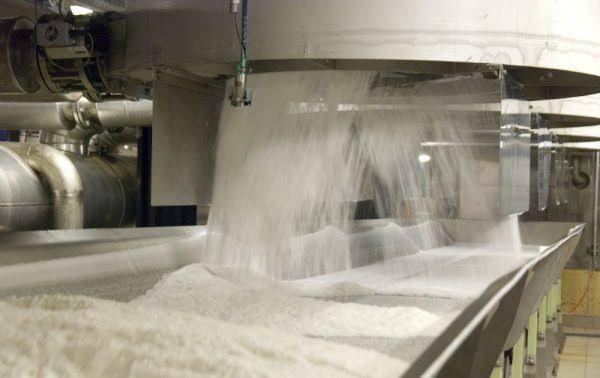The Sugarcane industry in India is one of the demanding and widespread agro-based industry in the country. It directly impacts livelihood of 5 core of farmers along with 5 lakh workers over 700 sugar mill factories in the country with a holding capacity of 340 lakh MT of sugar. Although being the second largest producer of sugar after Brazil, the Indian sugarcane producers and sugar manufacturers suffer major instability in price distribution and profitability.
The sugarcane industry has witnessing serious problems due to depressed prices of sugar that is directly affecting profitability and mis-match price distribution between sugarcane and sugar production. In other words, the cost of sugarcane production India is marginally higher as compared to the actual sellable price of the final product ( i.e. If C.O.P of Sugarcane is ₹150, sugar is sold at a price of ₹32/-Kg in the market, resulting a gap in profit margin leading the mills to run in loss).
The Fair & Remunerative Price (FRP) fixed by the government under recommendation by Commission on Agricultural Cost and Prices has provided fair remunerative to sugar cultivators as compared to other crop yielding produces. As per government norms, the sugarcane cultivators are entitled to receive 60-70 percent higher returns. Additionally, the sugarcane cultivators under Sugarcane Reservation Areas are secured against any price risks and the sugar mills have to buy crops from farmers from specified radius.
However, despite having FRP and SAP (State Advice Price), the sugar mills are making lower payments to the sugarcane farmers. The sugarcane producers face problem in delay of payments by sugar mills. As the sugar prices in the market do not correspond to sugarcane FRP, the mills fall short to make profits. The MSP of sugar stands out ₹31/kg, even after a hike of ₹2 do not help in covering the manufacturing cost of sugar. In FY 2017-18, production cost of sugar stood ₹3,580 per quintal in contrast to international prices which stood ₹2,080 per quintal.
The domestic consumption of sugar is 2.6 crore tonnes per annum. Surprisingly, the sugarcane industry is the only sector in India that is told how much to sell each month and also the sole sector to bear the burden of Social Welfare Programme of Government (PDS). In actual existence, the sugarcane and sugar price in India do not have a cohesive linkage. The excessive sugar surplus in the country is one of the major threat to the sugar producing mills. According to The Indian Sugar Mills Association (ISMA), India is all set enter into sugar surplus for the fifth consecutive year in a row as sugarcane farmers expand areas from 8 percent to 12 percent. For 2020-21, ISMA estimates output of 31 MT against annual demand of 26 MT.
The expansion of Sugarcane cultivators each year is worrisome. It is regarded as a pivotal cause for excessive sugar surplus in the country. The core equation of sugar mills operate on the basis of (expected production+ last year stock- domestic consumption-export). In 2019, sugar export witnessed record breaking of 60 lakh tonnes. It was possible due to central government’s inclusion of export subsidy programme of ₹10/kg. However, for 2020-21, the government has put a temporary ban on sugar export subsidy with an aim to boost the ethanol production capacity with 300-350 crore of litres.
In order to the curb excess sugarcane production for 2020-21, the government has notified the mills to produce ethanol oil instead of sugar. Similarly, the government will purchase ethanol at ₹1-3 per litre more in respect to boost the production capacity. The government has planned to blend 20 percent of ethanol with petrol and 10 percent with diesel by 2022. Thus, for achieving a target of 350 crore litres of ethanol, the government is manifesting perks in its National Policy of Biofuel 2018.
Nevertheless, the reality of sugarcane industry in India is harsh and needs to structured under vigilant infrastructures and blueprints. The sugarcane farmers needs to be induced with alternative farming. The sugar mills also need to introduced with storage capacity, machinery and advance amenities for the production of ethanol. The Indian sugarcane industry holds a turnover of 80,000 crore under producing area of 50 lakh hectare of land.
Rituparna Dutta

